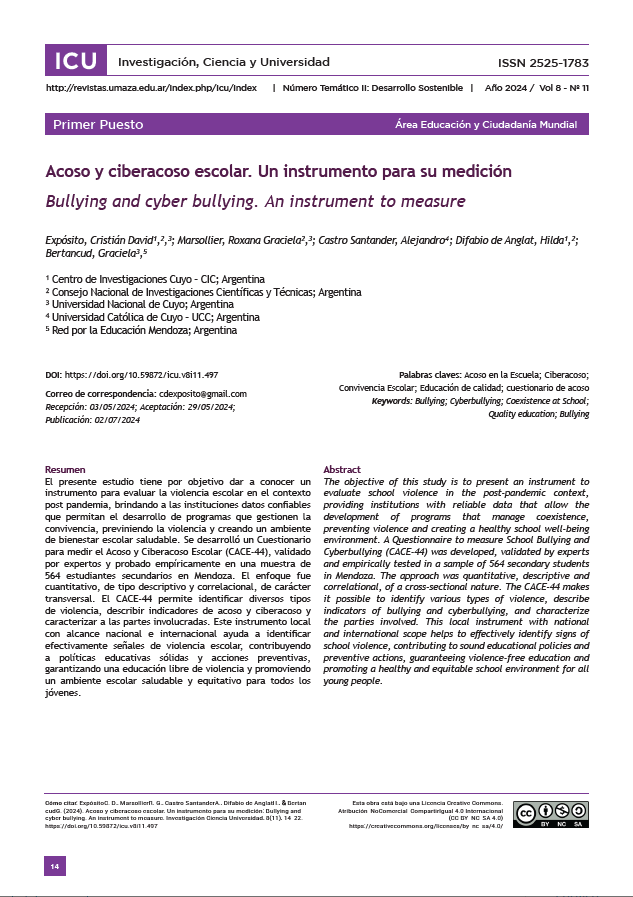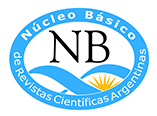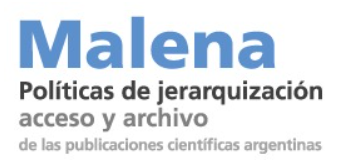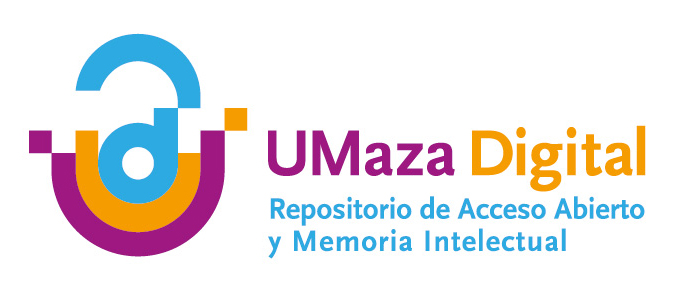Bullying and cyber bullying.
An instrument to measure
DOI:
https://doi.org/10.59872/icu.v8i11.497Keywords:
Bullying, Cyberbullying, Coexistence at School, Quality education, Bullying questionnaireAbstract
The objective of this study is to present an instrument to evaluate school violence in the post-pandemic context, providing institutions with reliable data that allow the development of programs that manage coexistence, preventing violence and creating a healthy school well-being environment. A Questionnaire to measure School Bullying and Cyberbullying (CACE-44) was developed, validated by experts and empirically tested in a sample of 564 secondary students in Mendoza. The approach was quantitative, descriptive and correlational, of a cross-sectional nature. The CACE-44 makes it possible to identify various types of violence, describe indicators of bullying and cyberbullying, and characterize the parties involved. This local instrument with national and international scope helps to effectively identify signs of school violence, contributing to sound educational policies and preventive actions, guaranteeing violence-free education and promoting a healthy and equitable school environment for all young people.
Downloads

Published
How to Cite
Issue
Section
Categories
License
Copyright (c) 2024 Cristián David Expósito, Roxana Graciela Marsollier, Alejandro Castro Santander, Hilda Difabio de Anglat, Graciela Bertancud

This work is licensed under a Creative Commons Attribution-NonCommercial-ShareAlike 4.0 International License.





















